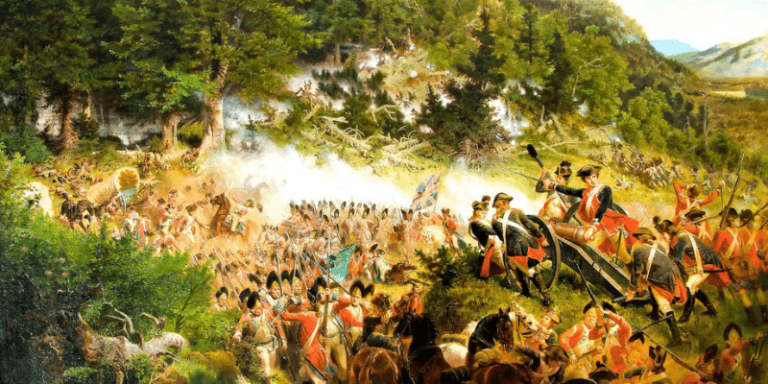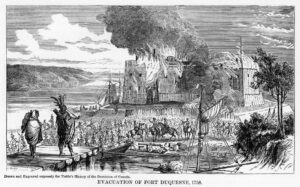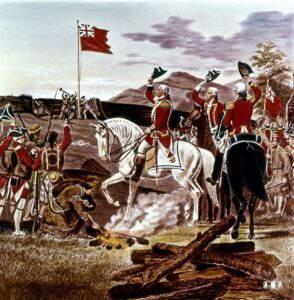French and Indian War: The War With Four Names
Before the American Revolution, there was the French and Indian War.
By: Kelli Ballard | July 8, 2021 | 558 Words

“Washington at the Battle of the Monongahela” by Emanuel Leutze (Photo by Pierce Archive LLC/Buyenlarge via Getty Images)
The French and Indian War, as it was called in the Colonies, was also known as the Seven Years’ War as well as the Second Hundred Years’ War in Europe. Later, Winston Churchill termed it the first world war since the fighting took place in Europe, the Caribbean, Africa, India, the Philippines, and of course, America. It lasted from 1756 to 1763 and, though it began as a fight between Britain and France, it contributed to the American Revolution. It was also started in the Colonies by none other than George Washington, who was only 21 years old at the time.

(Photo by The Print Collector/Print Collector/Getty Images)
What Sparked the War?
In the early 1750s, countries were still trying to carve out a spot for themselves in the newly discovered world. In 1753, Washington, then a Lieutenant Colonel, went to Pennsylvania with a written order for the French to vacate the area of the Ohio Valley. France had expanded into the Ohio River Valley, which caused conflict with the British colonies, especially in Virginia. In 1754, the French built Fort Duquesne in today’s Pittsburgh.
On May 28, 1754, Washington and hundreds of his men ambushed a small French scouting party, effectively launching the French and Indian War. The future president had to surrender his military base, then called Fort Necessity, on July 3, 1754.

George Washington at Fort Duquesne (Photo by Sipley/ClassicStock/Getty Images)
The French continued to dominate battles and the British efforts to secure the colonies were not looked on favorably by the colonists. The French also managed to secure the support of many Native Americans, strengthening their forces with people who knew the land well. In 1756, the British formally declared war.
In 1757, William Pitt became the new British leader. He paid Prussia to fight in Europe and paid colonists to raise troops in North America, borrowing heavily to finance the war. In Canada, the French lost their last foothold with the fall of Montreal in September 1760. Spain joined France against the British, who then concentrated their efforts on taking French and Spanish territories in other parts of the world.
End of the War Set the Stage for Another
In February 1763, the war ended after the Treaty of Paris. France gave up Canada to the British and Spain relinquished Florida. France also gave up Louisiana to Spain. This treaty and land exchange helped to strengthen the American colonies by sending the Europeans to the north and opening more areas for westward expansion.
Since the British had borrowed so heavily to fund the war, they needed a way to pay off their debt. King George III thought that since the war had benefited the colonists, they should be paying off some of that funding. The king also installed permanent British army units in the colonies to help protect from future attacks, which, of course, cost more money.
The Stamp Act was passed by parliament in 1765 and became the first internal tax levied directly on the American colonists, who were not pleased. Then the Townshend Acts and Tea Act were passed, further angering the colonists, who believed there should be no taxation without representation. These actions brought about the American Revolution, during which the colonists broke free of British control and formed the United States.
















